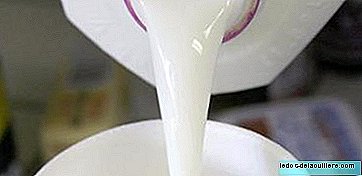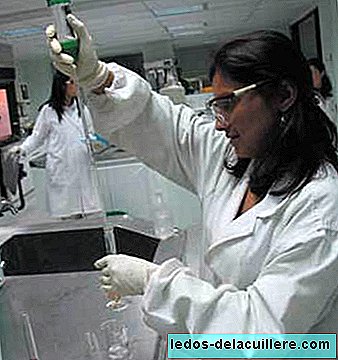
OCU has returned to perform an analysis of whole cow's milk consumed in Spain. I don't know if you remember, but three years ago I was surprised to know that 'there are brands of milk that do not meet the quality requirements'; and even that of the 47 analyzed, the consumer organization did not recommend the purchase of ten.
In the previous UHT whole milk analysis, conducted in 2011, the results were frankly disappointing. The OCU study showed that the increase in milk production had been achieved at the cost of sacrificing quality. Poor nutritional quality, milk aging and overly aggressive heat treatments were behind the poor results that many milk brands obtained.
In view of the results, the administration was asked for more stringent regulations and compliance checks, and the producers, to follow a system that guaranteed milk quality.
Well, last Friday new results were published indicating that higher quality has been achieved in the milk we consume, although there are still differences
What does milk provide?
According to the current OCU report, there is a current against milk consumption. I don't know if this is well expressed, that is, there are people who do not consume milk because their health condition prevents it (cow's milk protein allergy, or lactose intolerance), others who simply do not feel well (like me, for I want a diagnosis if I feel better without consuming it?), there are even those who defend that humans are the only mammals that continue to consume milk after weaning.
As part of the group that does not consume milk are individuals who do not drink milk because they do not like it, although they eat other dairy products; There are even those who, for different reasons, prefer milk from animals other than cows! In fact, there are goats and sheep on the market.
I understand that milk is a complete food, which I am not clear about (I leave it as a pending issue to explore) is that it is indispensableIn fact, the calcium intake is not exclusive to milk (although it is important in it)

But let's leave my ramblings, and let's continue: milk is a conglomerate of proteins, fat, lactose, minerals and vitamins, and It is suitable (except for health problems) for all family members (that have more than one year).
Not so bad milk
It seems that now aggressive treatments are not used and the milk is of better nutritional quality, due to the improvement in the processes; The road has begun, now we just have to continue along the same line.
I explain a little how the OCU does the analysis: first they study the market, before buying the samples, so they make sure that they will include the most representative brands.
The best-selling milk brands have been selected, both nationally and regionally. The comparison includes brands that are practically only found in some areas of Spain, but they are very sold there: it is the case of the Catalan Llet Nostra, the Castilian Tierra de Sabor, the Galician Larsa or the Basque Beyena.
It is then acquired anonymously in stores throughout the country, and sent to the laboratory (the samples have a minimum consumption date of 90 days). The products are sent to a specialized laboratory (certified with the requirements of ISO 9001: 2008), where their quality is checked: composition, hygiene.
The analytical methods used in the laboratory are the officers described in the specific regulations, those agreed by the International Dairy Federation (FIL) or the specific ISO regulations
With the results of the laboratory, the experts of the organization prepare Control Sheets, with all the analytical data. These sheets are sent to all manufacturers: that is, each of the manufacturers has known, since months ago, the results of your product.
Brand Analysis

On this occasion only 40 have been analyzed (three years ago 47) since some have disappeared or do not meet the requirements of the analysis (the date of consumption around 90 days). And as we have commented, this time the same analyzes show acceptable results.
No presence of phosphates has been detected (additive that corrects the defects of an inadequate processing); there is also no presence of powdered milk in any brand; and in general the heat treatment has improved, now it is less aggressive.
Further, 38 of the 40 brands analyzed have been rated as good or very good by a panel of expert tasters. Despite the general improvement, some improvement practices still persist, such as the presence of aged milk, especially in three brands where the rates of proteolysis (indicator of this practice), are especially high
By brands, the best results of the analysis are those obtained by Tierra de Sabor, Llet Nostra, La Vaquera and Condis. All of them are regional distribution brands. If they are not easily close to the consumer's home, Hacendado or Carrefour stand out nationally for their good value for money.
The milks with the worst rating are Carrefour discount, Milbona (Lidl) and La Vaquita, penalized for the use of aged milk

However, not all are positive news, milk is now on average 10% more expensive than three years ago. OCU notes that it is possible to save 108 euros per year choosing a good quality brand at a good price, compared to more expensive ones. OCU adds that white brands are on average 21% cheaper than the rest.
So we have to congratulate the OCU, and the consumers it represents for having made this change possible, as well as the producers for having listened to the complaints and attending to the needs of those who consume milk.
Images | Melissa Wiese, hobvias sudoneighm, James Rintamaki More information | OCU In Peques and More | Found up to 20 active pharmacological substances in cow's milk, goat, and human breast milk, Formula milk is no more effective than other foods that are part of the diet in children aged one to three years












